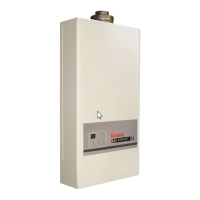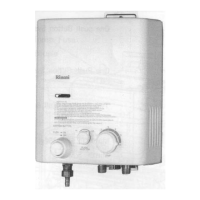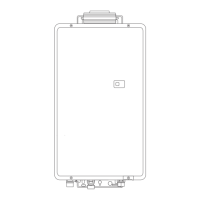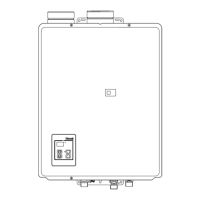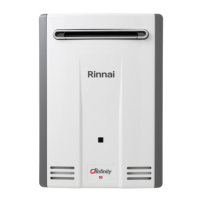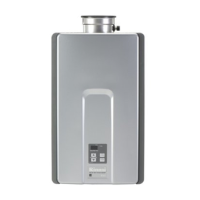
Do you have a question about the Rinnai REU - 16 FUA - E and is the answer not in the manual?
| Type | Tankless |
|---|---|
| Fuel Type | Natural Gas |
| Maximum Flow Rate | 6.6 GPM |
| Weight | 46 lbs |
| GPM at 35°F Rise | 6.6 GPM |
| Ignition Type | Electronic Ignition |
| Energy Efficiency | 0.82 Energy Factor (EF) |
| Maximum BTU Input | 160, 000 BTU/h |
| Minimum BTU Input | 15, 000 BTU/h |
| Venting | Direct Vent |
| Warranty | 12 years heat exchanger, 5 years parts, 1 year labor |
Outlines user duties, warnings, and limitations for operating the water heater safely and correctly.
Critical emergency procedure for gas leaks, including immediate actions and contact information.
Details dangers of hot water, especially for children/elderly, and recommends temperature settings and tap safety.
Explains the requirement for annual servicing by a gas engineer and cleaning procedures for the appliance casing.
Lists error codes, their corresponding faults, and suggested remedies for troubleshooting the water heater.
Details legal requirements, competent person installation, and relevant British Standards for appliance installation.
Describes gas control units, modulating valves, solenoid valves, flame rod, and combustion fan functions.
Provides guidelines for selecting the installation location and required clearances around the appliance for safety and servicing.
Details requirements for water supply pressure, pipework, isolation valves, and gas connection sizing.
Illustrates plumbing and gas layouts for direct flow and pumped secondary circulation installations.
Specifies the required ventilation areas for installing the appliance in a compartment, to room or outside.
Outlines limitations on flue length, bend count, and requirements for condensate drains and traps.
Provides a diagram and table specifying minimum distances for flue terminal placement relative to openings and other features.
Offers advice on choosing suitable locations and mounting procedures for temperature controllers.
Outlines procedures for testing water leaks, gas escapes, and checking gas pressure with appliances operating.
Explains dip switch settings for gas type and procedures for adjusting burner pressure.
Lists key components, their measurement points, wire colors, normal values, and remarks for diagnostics.
